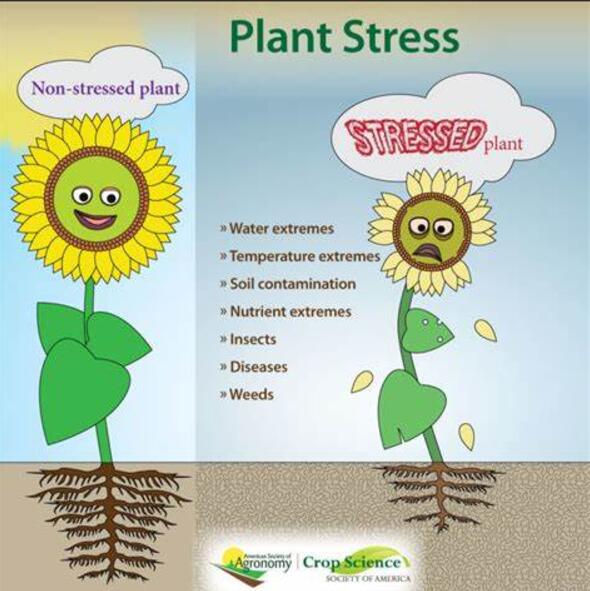Impacts of groundwater depth and tree age on the non-structural carbohydrates of Haloxylon ammodendron
IF 6.8
Q1 PLANT SCIENCES
引用次数: 0
Abstract
Nonstructural carbohydrates (NSC) are important substrates for plant growth and metabolism, and their concentration reflects the plant's ability to adapt to environmental changes. Although the response of NSC to changes in water availability has been extensively studied, it is still not fully understood whether this response is modulated by tree ages and organs. This study investigates Haloxylon ammodendron (C.A. Mey.) Bunge ex Fenzl, the dominant species in the Gurbantunggut Desert in the Uyghur Autonomous Region of China. Utilizing the natural topographic conditions characterized by a gradual increase in groundwater depth from the desert edge to the hinterland, we collected samples of different age classes of H. ammodendron along a groundwater depth gradient of 3, 7, 10, and 14 m. We measured the total concentrations of non-structural carbohydrates (NSC) and its components soluble sugar (SS) and starch (ST) in the assimilative twigs and stems. The results showed that the assimilative twigs of H. ammodendron exhibited higher NSC concentrations at the site with the deepest groundwater, while the other three sites showed similar NSC concentrations. Furthermore, as groundwater depth increased, the concentrations of SS in the assimilative twigs increased, whereas ST concentrations decreased. Similarly, the concentrations of SS in the stems also increased at sites with deeper groundwater. The NSC concentrations in the assimilative twigs were significantly affected by groundwater depth, while variations in stem NSC were primarily driven by plant age. In younger trees, higher soluble sugars concentrations in the stem may enhance water transport efficiency, whereas older trees tend to store more NSC to alleviate drought stress. Overall, elevated nonstructural carbohydrate concentrations contributed to greater drought resilience in H. ammodendron. These results suggest that different age classes of H. ammodendron exhibit distinct physiological responses to decreasing groundwater depth. The varying requirements for soluble sugars and starch in H. ammodendron help to partially mitigate the adverse effects of reduced groundwater accessibility. These findings provide important insights into the physiological adaptations of H. ammodendron in arid environments and offer a scientific basis for future ecological restoration and management strategies.

地下水深度和树龄对海龙非结构性碳水化合物的影响
非结构碳水化合物(NSC)是植物生长和新陈代谢的重要底物,其浓度反映了植物适应环境变化的能力。虽然非结构性碳水化合物对水分供应量变化的响应已被广泛研究,但这种响应是否会受到树龄和器官的调节仍不完全清楚。本研究调查了中国维吾尔族自治区古尔班通古特沙漠的优势树种 Haloxylon ammodendron (C.A. Mey.) Bunge ex Fenzl。利用从沙漠边缘到腹地地下水深度逐渐增加的自然地形条件,我们沿地下水深度梯度 3 米、7 米、10 米和 14 米采集了不同龄级的绣线菊样本,并测定了同化枝和茎中的非结构碳水化合物(NSC)及其组分可溶性糖(SS)和淀粉(ST)的总浓度。结果表明,在地下水最深的地点,H. ammodendron 的同化枝的非结构碳水化合物浓度较高,而其他三个地点的非结构碳水化合物浓度相近。此外,随着地下水深度的增加,同化枝条中的 SS 浓度增加,而 ST 浓度下降。同样,在地下水较深的地点,茎中的 SS 浓度也有所增加。同化枝条中的 NSC 浓度受地下水深度的影响很大,而茎中 NSC 的变化则主要受植株年龄的影响。在幼树中,茎中可溶性糖浓度较高,可能会提高水分运输效率,而老树则倾向于储存更多的非结构糖,以缓解干旱胁迫。总体而言,非结构碳水化合物浓度的升高有助于提高 H. ammodendron 的抗旱能力。这些结果表明,不同树龄的 H. ammodendron 对地下水深度的降低表现出不同的生理反应。羊齿植物对可溶性糖和淀粉的不同需求有助于部分缓解地下水获取能力下降带来的不利影响。这些研究结果为了解旱生杜鹃花在干旱环境中的生理适应性提供了重要依据,并为未来的生态恢复和管理策略提供了科学依据。
本文章由计算机程序翻译,如有差异,请以英文原文为准。
求助全文
约1分钟内获得全文
求助全文
来源期刊

Plant Stress
PLANT SCIENCES-
CiteScore
5.20
自引率
8.00%
发文量
76
审稿时长
63 days
期刊介绍:
The journal Plant Stress deals with plant (or other photoautotrophs, such as algae, cyanobacteria and lichens) responses to abiotic and biotic stress factors that can result in limited growth and productivity. Such responses can be analyzed and described at a physiological, biochemical and molecular level. Experimental approaches/technologies aiming to improve growth and productivity with a potential for downstream validation under stress conditions will also be considered. Both fundamental and applied research manuscripts are welcome, provided that clear mechanistic hypotheses are made and descriptive approaches are avoided. In addition, high-quality review articles will also be considered, provided they follow a critical approach and stimulate thought for future research avenues.
Plant Stress welcomes high-quality manuscripts related (but not limited) to interactions between plants and:
Lack of water (drought) and excess (flooding),
Salinity stress,
Elevated temperature and/or low temperature (chilling and freezing),
Hypoxia and/or anoxia,
Mineral nutrient excess and/or deficiency,
Heavy metals and/or metalloids,
Plant priming (chemical, biological, physiological, nanomaterial, biostimulant) approaches for improved stress protection,
Viral, phytoplasma, bacterial and fungal plant-pathogen interactions.
The journal welcomes basic and applied research articles, as well as review articles and short communications. All submitted manuscripts will be subject to a thorough peer-reviewing process.
 求助内容:
求助内容: 应助结果提醒方式:
应助结果提醒方式:


